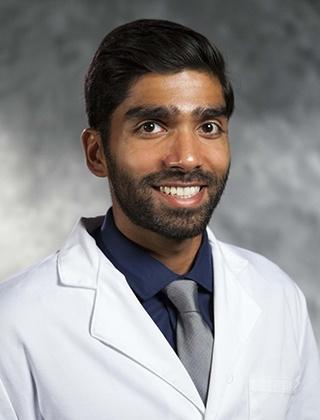2018: New Year, New Health Through Health Care
With the beginning of a new year, many of us create resolutions to do what we have been unable to in the past. We resolve to change our behaviors to lose weight, quit smoking, or write more (check!), but somehow 92 percent of us end up failing.
Behavior change is hard. Our resolutions often challenge us to alter the pleasure pathways we have strengthened for years. This is partly from the dopamine high we get from fatty, sugary food or the stimulation of nicotinic receptors from tobacco use. These habits become addictions, easily enabled by the convenience of low-cost soft drinks from corner stores, tobacco from pharmacies and the temptation to have it your way at the neighborhood fast food joint. These pathways, reinforced by our environments, are so difficult to change that the American population has soared through physiologic norms where we see the increasing prevalence of diabetes (30 million), heart disease (92 million), obesity (84 million) and more.
As an interning physician at Duke Family Medicine studying and caring for patients daily, I am fascinated by the behaviors necessary to both propagate this trend and reverse it. As clinicians, we ultimately aim to change our patients’ behaviors given that nearly 30 percent of health outcomes are a result of them. We ask our busy, stressed, burdened patients to lose weight and break life long habits, while we are left frustrated with the lack of progress.
Perhaps we’re about to gain first-hand insight into how challenging behavior change can be. We have seen health care costs rise above $3.3 trillion or 17.9 percent of our GDP in 2016 and now face the daunting challenge of trimming the weight from our system whose obesity we helped to create. Over the past few decades, our health care system has relied on a fee-for-service (FFS) model of care. We are rewarded for the number of procedures, clinical visits, and hospital encounters patients endure. Historically, this means that there has been a push to do more, see more and bill for more through mechanisms like Relative Value Units as a way of measuring and incentivizing physician productivity. Hospital systems have also invested more in highly reimbursing specialist services and services like imaging, especially as operating costs increase.
But this is beginning to change with the trend moving away from service-based reimbursement. Value Based Care (VBC) rather than FFS, intends to shift how health care is delivered and incentivized, moving away from payment for services, and toward payment for value. Essentially, VBC means providers will be challenged to deliver the best care for the lowest cost. Reduced costs will come from reducing waste, improving efficiency, reducing lengthy hospital stays and ED visits by moving more upstream to address the socioeconomic, behavioral and environmental causes of disease.
The Center for Medicare & Medicaid Services is leading the way by incentivizing hospital systems to maximize revenue by improving processes to reduce adverse events and lengthy hospital stays with better care coordination, outpatient follow-up, prevention services, and more.
Despite passing laws, these efforts will take years to transform the system as hospitals learn to leverage clinical data to track quality metrics and reconcile billing for value in a current business model entirely dependent on FFS.
Therefore, it is up to us as health care practitioners to make real-time changes to the way we execute health care delivery. To upend a system that relies on revenue from services and filling beds to one that now profits from doing the opposite will take huge shifts in provider behavior. So we must ask our busy, stressed and burdened selves to break our career-long habits we have maintained given the context of our fee-based and costly system.
As many behavior change theories suggest, it starts with doing something small, realistic and rewarding. Now that we’ll be incentivized to practice value over volume, perhaps we can work with social or community health workers to improve health outcomes, study and participate in budding models of population and community health, or take the time to strengthen relationships with our patients. We can begin to understand and address the non-clinical economic, social and environmental structures that make behavior change so difficult and unhealthy behaviors so profitable. The reward is the chance for us to return to our initial reason for coming into medicine, not to bill, but to help and heal.
This new year, we as clinicians need to resolve to enhance our role in the entrenched and existing health care system. It starts with how we treat our patients, grow our care teams, and really address where health comes from. In 2018, may we all strive to feel light, happy and most importantly — healthy!
Sameer Sood is a first-year resident with the Duke Family Medicine Residency Program. Email sameer.sood@duke.edu with questions.
Editor’s note: Duke Family Medicine residents guest blog every month. Blogs represent the opinion of the author, not the Duke Family Medicine Residency Program, the Department of Community and Family Medicine or Duke University.
